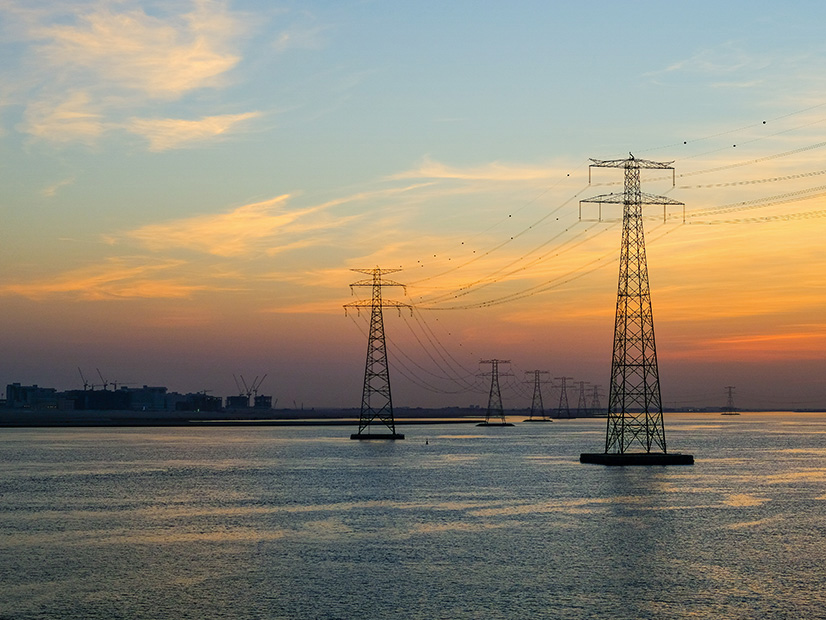New England is getting serious about offshore wind transmission.
In a request for information published on Thursday, a coalition of five states — Massachusetts, Connecticut, Rhode Island, Maine and New Hampshire — asked for comments about how to connect the thousands of megawatts of offshore wind power in the development pipeline with the region’s complicated, crowded grid.
The states are trying to start early, cognizant of the intense planning required for such a massive infrastructure buildout and competition for federal funding.
 A conceptual offshore wind transmission plan from the New England states. | New England Energy Vision
A conceptual offshore wind transmission plan from the New England states. | New England Energy VisionThey also laid out an early conceptual framework for how they plan to get started, with incremental, phased additions of transmission able to handle 1,200 MW each through 2040.
“Having a clean, affordable, reliable regional electricity grid — supported by transparent decision-making processes and a transmission system that reliably accommodates duly enacted clean energy laws — is foundational to achieving our clean energy future,” the states said in a statement.
In addition to comments on the plan, which are due Oct. 14, state agencies will hold a technical conference to talk in depth about the best interconnection points, how to minimize land-based transmission upgrades, the design and implementation of HVDC systems, and how to co-optimize transmission infrastructure to maximize consumer benefits.
Among the questions the group is asking for advice on are how to prioritize different projects, whether to prefer HVDC over other types of lines, and how to minimize costs to ratepayers.
The Modular Offshore Wind Integration Plan included in the RFI gets even further into the nitty gritty of where offshore transmission lines should make landfall.
“Initial assessments suggest that Bridgeport, Conn., and Boston, Mass., areas are potential efficient interconnection points for the next tranche of OSW generation,” the plan says, but the states also ask for advice about other options.
The RFI and accompanying plan were met by excitement from the region’s environmental groups and clean energy industry.
“New England for Offshore Wind is thrilled that five of the six New England states have come together to issue this request for information and explore investment options for the transmission infrastructure needed to integrate clean resources, including offshore wind, onto the regional power grid,” said Susannah Hatch, Environmental League of Massachusetts Director of Clean Energy Policy in a statement.
Whither Vermont?
Notably missing from the list of states involved is Vermont, but the document makes clear that the Green Mountain State, with its lack of coastline, will still be watching closely.
“Given Vermont’s vertically integrated structure and the lack of any shoreline to act as a potential point of interconnection for offshore wind — which is a substantial, though not sole, focus of this RFI — Vermont will not act as a participating state,” a footnote says.
“However, Vermont is generally supportive of a regionally organized effort to gather information that will aid each state’s planning activities and potentially facilitate federal funding opportunities for transmission upgrades and will remain a close observer of this request for information and may participate in subsequent discussions regarding its content and/or next steps.”


